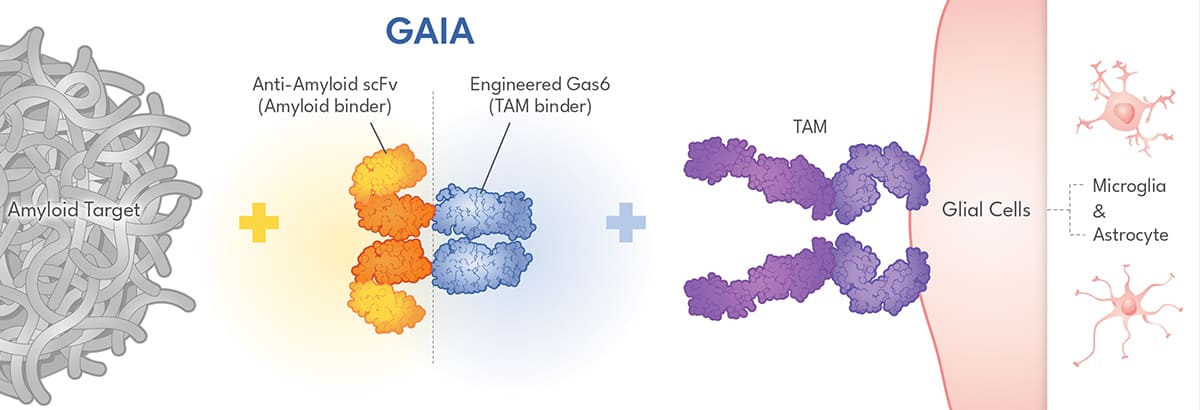PLATFORM & PIPELINE
Based on good will, we continuously strive to innovate science
and technology to improve the quality of life of patients and their families.
PLATFORM
Gas6-mediated Anti-Inflammatory Adaptor (GAIA)
Targeting TAM, not FcR
-
1
Phagocytosis with
anti-inflammatory signal -
2
Expressed both on
microglia and astrocyte -
3
Well-known vital
pathway for homeostasis

Enhanced Amyloid Clearance
Synergistic dual-action of microglia
and astrocyte Immunotherapy
- 1
- 2
Beneficial Glial Modulation
Boosted phagocytic function with
limited inflammatory response
"Amyloid Clearance without Unwanted Neuroinflammation"
ILLIMIS THERAPEUTICS continues to develop innovative and valuable treatments for incurable diseases. We develop novel treatments in diverse forms of biologics based on a chimeric fusion protein platform for neurodegenerative disorders and amyloidosis.
Antibody drugs that utilize FcγR-mediated phagocytosis of microglia are used to eliminate the misfolded aggregated protein such as Aβ (amyloid-β), which causes neurodegenerative diseases. However, FcγR-mediated phagocytosis eventually leads to undesirable inflammatory responses. Consequently, antibody-induced neuroinflammation has become a severe concern. These neuroinflammation induces ARIA (microhemorrhage and edema) and neurotoxicity that exacerbate cognitive impairment. To overcome these challenges, we developed a chimeric fusion protein that uses a novel phagocytic receptor, TAM receptor (Tyro3, Axl and Mer), expressed on the surface of glial cells. Downstream signaling through TAM receptor is known to induce activation of phagocytosis and inhibit inflammation.
GAIA (Gas6-mediated Anti-Inflammatory Adaptor) platform is a bispecific fusion protein that mounts amyloid target binder on one side and a TAM receptor binder on the other side. TAM binder is the engineered Gas6 that is the soluble ligand of the TAM receptor. GAIA binds the amyloid target and TAM receptor simultaneously with its two distinct binders, and triggers dimerization of the bound TAM receptor. Using this strategy, GAIA enables the clearance of misfolded proteins by phagocytosis within absence of inflammation. We are currently developing therapeutics targeting Aβ (ILM01), tau (ILM02), and α-syn (ILM03) based on this platform technology. In one-to-one comparison studies with Aducanumab, the GAIA-Aβ candidate was shown to have improved efficacy and safety profile. GAIA-tau and GAIA-α-syn candidates are also being tested in proof-of-concept studies. Based on the extensive possibilities and potential of the GAIA platform, we plan to broaden indications to include amyloidosis (ATTR or AL amyloidosis) and other neurodegenerative diseases.
Challenges and Solutions

